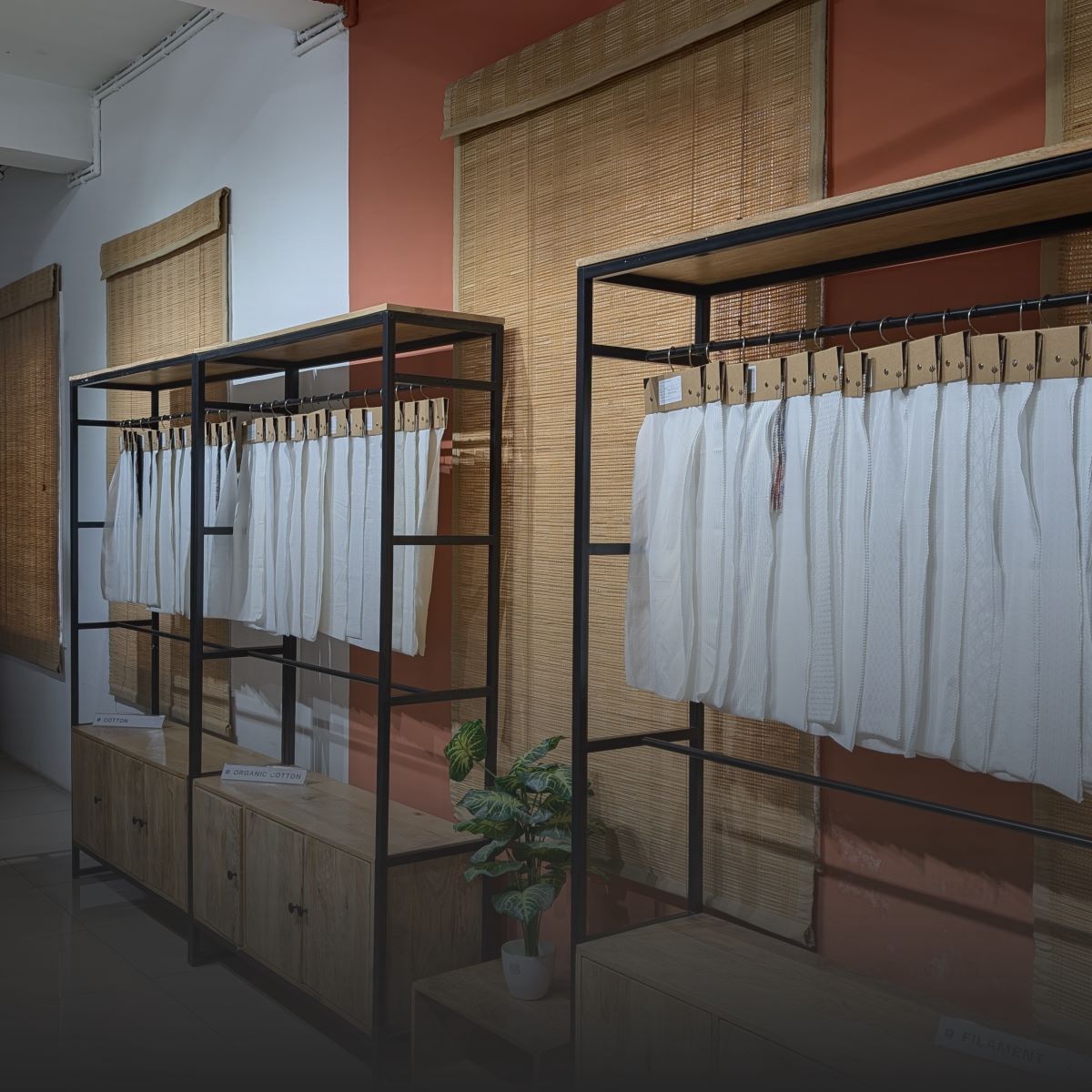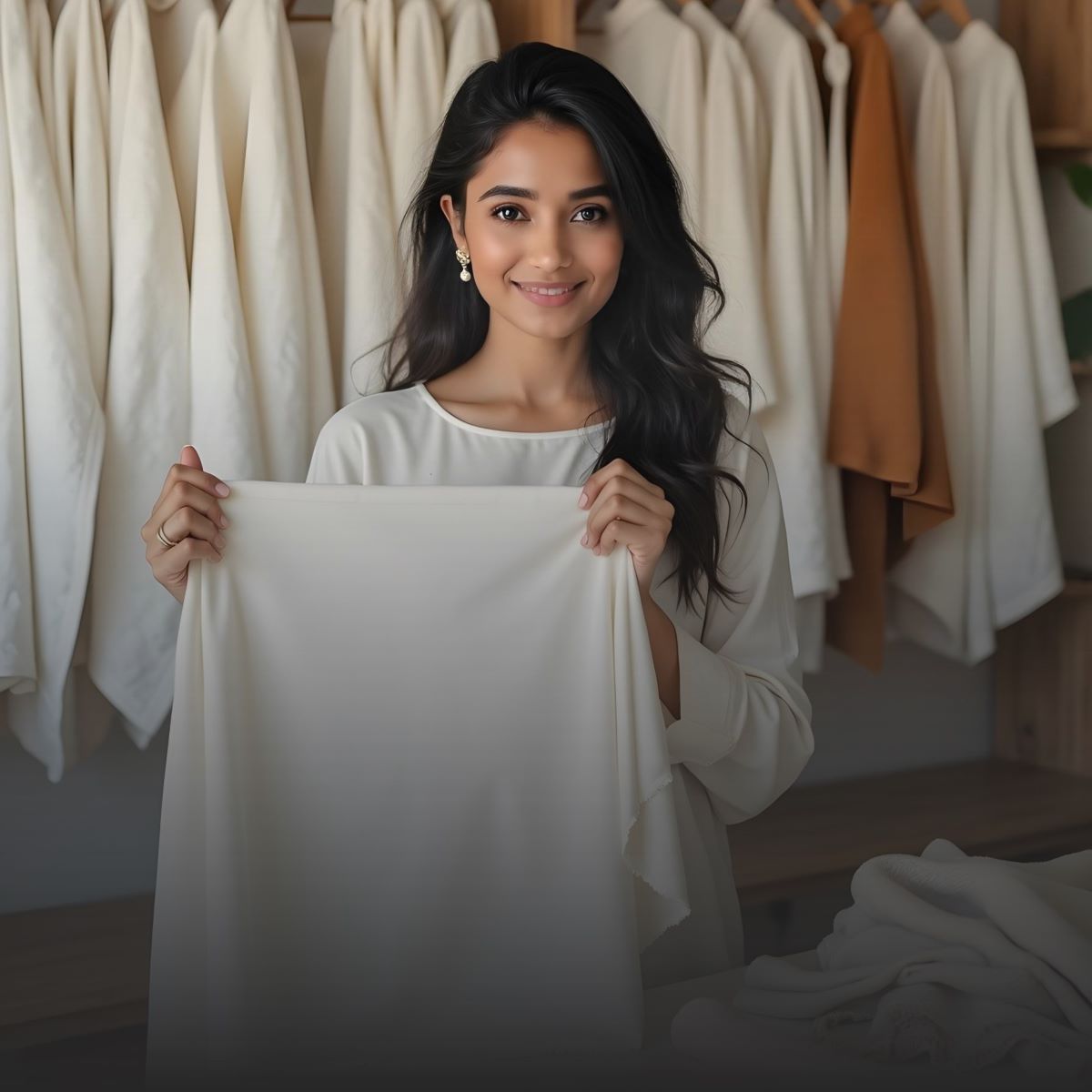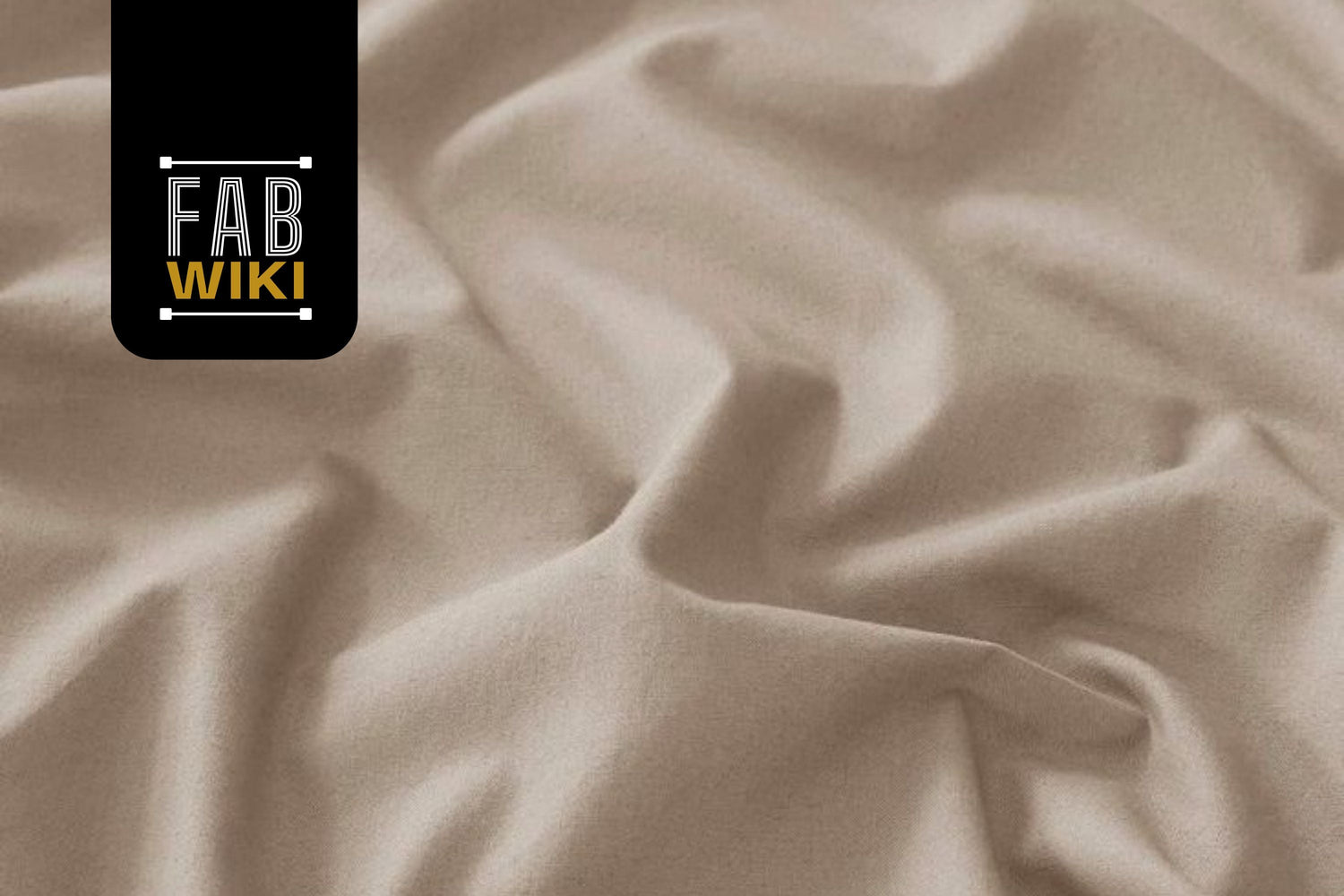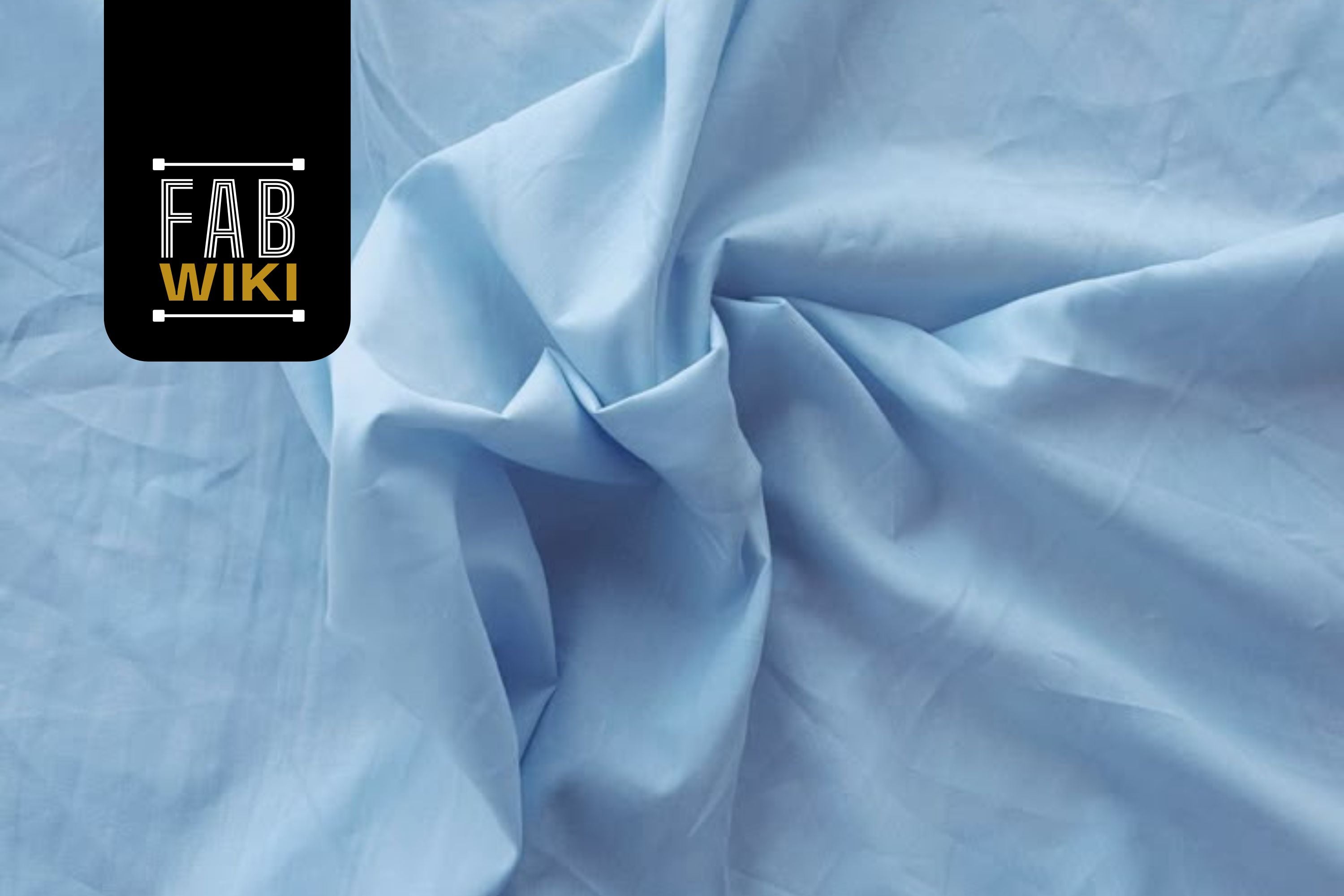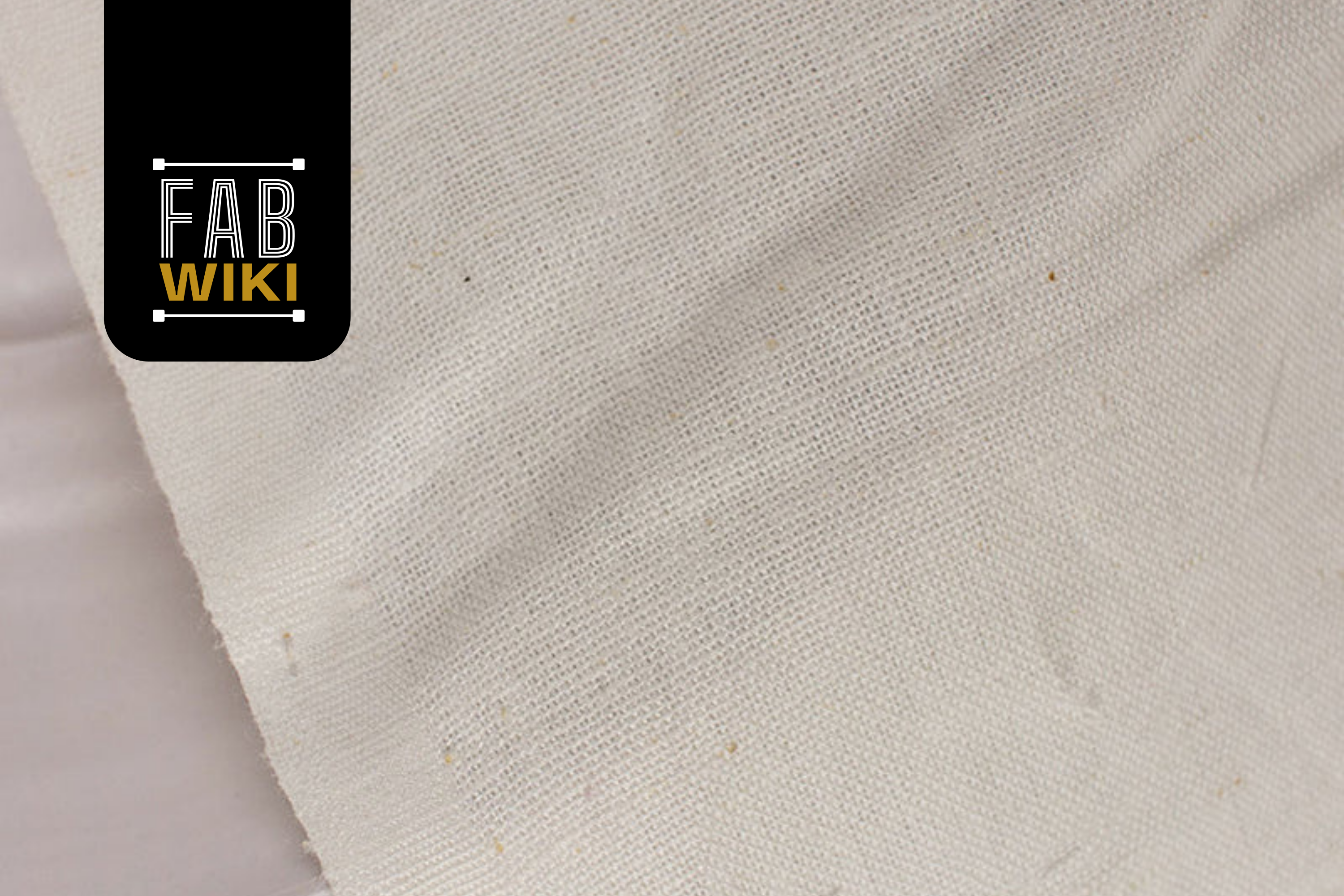Introduction to Cotton Sheeting Fabric
- Cotton sheeting fabric is soft, lightweight and breathable, making it a versatile choice for various applications.
- It is commonly used in home textiles, clothing and industrial purposes.
- Designers, manufacturers and DIY enthusiasts prefer it for its practicality and ease of use.
- Cotton sheeting fabric is available in different weights, textures and finishes, catering to a wide range of needs.
Also Read: Linen fabric
History and Evolution of Cotton Sheeting Fabric
- Cotton has been used in textiles for centuries due to its versatility and comfort.
- The cotton sheeting fabric became popular during the Industrial Revolution when mechanized weaving enabled mass production.
- Today, advancements in organic farming and sustainable processing make it even more appealing.
What is Cotton Sheeting Fabric?
- Cotton sheeting fabric is a medium-weight, 100% cotton textile with a smooth texture and soft feel.
- This fabric absorbs moisture, allows air circulation and withstands frequent washing.
- It is easy to dye and print and is available in various thread counts for different levels of softness and luxury.
Modern Innovations in Cotton Sheeting Fabric:
|
Category |
Innovation |
Description |
|
Advanced Weaving and Processing Techniques |
|
|
|
Sustainable and Eco-Friendly Developments |
|
|
|
Performance-Enhancing Treatments |
|
|
What Makes Cotton Sheeting Fabric Special?

- Cotton sheeting fabric is soft and keeps you cool.
- It is lightweight yet strong, making it durable for daily use.
- It is affordable and comes in different qualities to suit various budgets.
- Being hypoallergenic, it is safe for sensitive skin, making it ideal for bedding, hospital sheets and clothing.
Types of Cotton Sheeting Fabric
|
Category |
Type |
Characteristics |
Common Uses |
|
Based on Thread Count |
|
|
|
|
Based on the Weave Structure |
|
|
|
Advantages of Cotton Sheeting Fabric
- It absorbs moisture well, keeping the body cool and dry.
- It helps regulate temperature, stays cool in warm weather and provides warmth in cooler conditions.
- The fabric is easy to wash and care for, making it convenient for daily use.
- Eco-friendly options like organic cotton are available, which are biodegradable and better for the environment.
Disadvantages of Cotton Sheeting Fabric (and How to Solve Them)
- It wrinkles easily, so using wrinkle-free cotton or ironing helps.
- It can shrink in hot water, so washing in cold water and air-drying is better.
- Cotton is not very warm, but using heavier fabric or adding blankets can help.
- It absorbs water and dries slowly, so using lightweight cotton or drying in a breezy area works best.
Sustainability & Environmental Impact Cotton Sheeting Fabric:
|
Aspect |
Conventional Cotton Sheeting |
Organic Cotton Sheeting |
Eco-Friendly Alternatives |
|
Cultivation |
Heavy pesticide and water use |
Grown without synthetic chemicals or GMOs |
Recycled Cotton (textile waste) & Bamboo-Cotton blends |
|
Environmental Impact |
Contributes to soil degradation and pollution |
Uses less water and promotes biodiversity |
Reduces landfill waste & conserves resources |
|
Certifications |
None specific |
GOTS (Global Organic Textile Standard) |
OEKO-TEX®, BCI, Fair Trade Certification |
|
Sustainability |
Higher environmental footprint |
Lower environmental impact |
Enhances durability, moisture absorption (bamboo blends) |
|
Sustainable Dyeing Methods |
It uses synthetic dyes, high water consumption |
Natural plant-based dyes, low-water immersion techniques |
Varies by fabric type |
|
Biodegradability |
100% cotton is biodegradable |
100% biodegradable |
Synthetic blends take longer to decompose |
|
Responsible Consumer Choices |
Often mass-produced, shorter lifespan |
Higher quality, long-lasting fabric |
Supports ethical brands, reduces waste |
Care and Maintenance Tips for Cotton Sheeting Fabric
1. Washing Tips
- Wash cotton sheeting fabric in cold or warm water to prevent shrinking and fiber damage.
- Use a mild detergent because strong ones can fade colors and weaken the fabric.
- Wash dark and light fabrics separately to avoid color mixing.
2. Drying Techniques
- Air dry cotton sheeting in a shaded area to prevent sun damage and shrinkage.
- Use a low or medium heat setting in the dryer to avoid wrinkles and shrinkage.
- Remove the fabric from the dryer quickly to prevent deep creases and reduce ironing.
3. Ironing and Wrinkle Prevention
- Iron cotton sheeting on medium heat while slightly damp to remove wrinkles easily.
- Use steam for tough wrinkles.
- Natural softeners like vinegar or baking soda help make the fabric softer and reduce wrinkles.
- Some cotton fabrics are wrinkle-resistant, so check the label before buying.
4. Storage Best Practices
- Store cotton sheeting in a cool, dry place to prevent mildew.
- Fold it neatly or hang it in a breathable fabric bag to keep it fresh.
- Use lavender sachets or cedar blocks to keep the fabric smelling good and deter insects.
The Role of Cotton Sheeting Fabric in Fashion & Design

1. Why Designers Love Cotton Sheeting Fabric
- Cotton sheeting fabric is versatile and can be used for casual clothes, formal outfits and accessories.
- It is easy to dye, print and decorate with embroidery or patterns.
- Eco-friendly options, like organic cotton, help support sustainable fashion.
2. Cotton Sheeting in Apparel
- It is great for casual wear like T-shirts, dresses, summer tops and light jackets.
- In formal wear, it is often used as a lining for suits, blouses and evening outfits.
- Its soft texture makes it perfect for pajamas, nightgowns and robes.
3. Home Textile Applications
- Cotton sheeting is used for bedsheets, pillowcases and duvet covers for comfort.
- It is ideal for curtains and drapes, making windows look light and airy.
- It works well for upholstery and cushion covers, adding softness and style to home decor.
4. Use in Accessories & Crafts
- Cotton sheeting is used to make reusable bags as an eco-friendly alternative to plastic.
- It is a great fabric for scarves and bandanas because it is light and breathable.
- Its smooth texture makes it ideal for quilting and patchwork projects.
Common Applications & Uses of Cotton Sheeting Fabric:
|
Category |
Applications |
|
Home Textiles |
|
|
Apparel & Fashion |
|
|
Industrial & Commercial Uses |
|
|
Art & Printing Industry |
|
Manufacturing Process of Cotton Sheeting Fabric:

|
Stage |
Process Details |
|
1. Cotton Fiber Selection |
Selection of high-quality cotton fibers based on length, strength and purity. Long-staple cotton (e.g., Egyptian or Pima) is preferred for premium sheeting. |
|
2. Spinning the Cotton into Yarn |
|
|
3. Weaving the Fabric |
|
|
4. Bleaching & Dyeing |
|
|
5. Finishing Treatments |
|
|
Final Steps |
Fabric is inspected, cut and packaged for wholesale and retail distribution. |
Cotton Sheeting Fabric vs. Other Fabrics:
|
Comparison |
Similarities |
Differences |
Common Uses |
|
Cotton Sheeting vs. Muslin |
Both are lightweight, breathable and made from cotton. |
Muslin is more loosely woven and less durable. Cotton sheeting has a tighter weave, making it smoother and stronger. |
Muslin: Test garments, cheesecloth and baby wraps. Cotton Sheeting: Bedding, apparel, home décor. |
|
Cotton Sheeting vs. Poplin |
Both are tightly woven, smooth and used in clothing and upholstery. |
Poplin has a finer weave with a slightly ribbed texture, creating a crisp finish. Cotton sheeting is softer and more breathable. |
Poplin: Dress shirts, skirts, formal wear. Cotton Sheeting: Bedsheets, casual clothing, home textiles. |
|
Cotton Sheeting vs. Broadcloth |
Both fabrics are tightly woven and smooth. |
The broadcloth is heavier with a slight glossy finish. Cotton sheeting is lighter and softer. |
Broadcloth: Formal shirts, blouses, uniforms. Cotton Sheeting: Bedding, quilting, relaxed apparel. |
|
Cotton Sheeting vs. Synthetic Fabrics (Polyester, Rayon, Nylon) |
All are used in bedding, clothing and home decor. |
Cotton sheeting is natural, breathable and biodegradable. Synthetics are wrinkle-resistant and more durable but less breathable. Cotton sheeting is more eco-friendly, especially in organic variants. |
Synthetics: Wrinkle-resistant, long-lasting clothing and upholstery. Cotton Sheeting: Soft, comfortable and sustainable textiles. |
Which Fabric is Best for You?
- Choose Cotton Sheeting for breathability, softness and natural comfort.
- Opt for Poplin or Broadcloth for a crisper, structured look in apparel.
- Go for Synthetics if you need wrinkle-resistant, long-lasting materials.
Where to Buy Cotton Sheeting Fabric?
1. Wholesale vs. Retail: Which One to Choose?
Wholesale:
- Best for businesses, bulk buyers and manufacturers.
- Lower price per yard/meter.
- Requires a minimum order quantity (MOQ).
Retail:
- Ideal for small projects, DIY or personal use.
- Available in smaller cuts (yards/meters).
- Slightly higher cost per unit compared to wholesale.
2. Best Places to Buy Cotton Sheeting Fabric
Online Fabric Stores (Convenient and Wide Variety):
- Fabriclore is great for wholesale in India.
- Mood Fabrics offers high-quality designer cotton.
- Joann Fabrics is ideal for quilting and crafts.
- Spoonflower allows for custom-printed cotton sheeting.
Direct from Manufacturers (Best for Bulk Buyers):
- In India, Tiruppur, Jaipur, Ahmedabad and Surat are key places for cotton sheeting fabric production.
- In China, Guangzhou and Zhejiang are known for handling large orders.
- In the USA, Carolina and Texas are home to top-quality cotton mills.
Local Fabric Markets & Stores (Touch and Feel Before You Buy):
- Chandni Chowk in Delhi, India, is a popular fabric shopping area.
- Dongdaemun Market in Seoul, South Korea, is well-known for its fabrics.
- Sham Shui Po in Hong Kong is another great fabric shopping spot.
- The Los Angeles Fashion District in the USA is famous for fabric shopping.
3. What to Look for When Buying Cotton Sheeting Fabric?
- A higher thread count makes the fabric smoother.
- Percale is crisp, sateen is silky and plain weave is basic.
- A higher GSM (grams per square meter) means a more durable fabric.
- Organic cotton sheeting is eco-friendly and chemical-free.
How to sew with sheeting fabric
- Sewing with sheeting fabric is straightforward because it's a woven fabric, which makes it easier to cut and sew compared to knits.
- When working with sheeting, use a straight stitch for the seams.
- Remember to backstitch at both ends to secure the stitches.
- Since woven fabrics can fray easily, it's important to finish the edges.
- You can finish the edges by using a zigzag stitch on your regular sewing machine or a serger (overlocker) to prevent the fabric from unraveling.
Conclusion
Cotton sheeting fabric is a versatile and practical material used in many areas, from home textiles to clothing. Its breathability, softness and comfort make it a great choice for things like bedding and casual wear. With improvements in weaving and eco-friendly production methods, cotton sheeting has become more durable, sustainable and high-quality. Whether you're using it for everyday clothes, bedding or even industrial purposes, cotton sheeting's long-lasting nature and easy care make it a popular choice. With options like organic or high-thread-count fabric, cotton sheeting provides a good balance of quality, affordability and environmental responsibility, appealing to both consumers and designers.
1. What is Cotton Sheeting Fabric?
Cotton sheeting fabric is a soft, breathable and durable fabric made from 100% cotton. It's commonly used for making bed sheets, pillowcases and other home textiles.
2. What Type of Cotton Fabric is Used for Sheets?
Cotton fabrics commonly used for sheets include Percale (crisp and smooth), Sateen (soft and glossy) and Cotton Muslin (light and breathable).
3. What is Very Thin Cotton Fabric Called?
Very thin cotton fabric is called Cotton Voile or Cotton Lawn. These fabrics are lightweight, sheer and ideal for summer clothing.
4. What is Cotton Mesh Fabric Used For?
Cotton mesh fabric is used for sportswear, activewear, bag linings, footwear and home textiles like curtains and decorative items.
